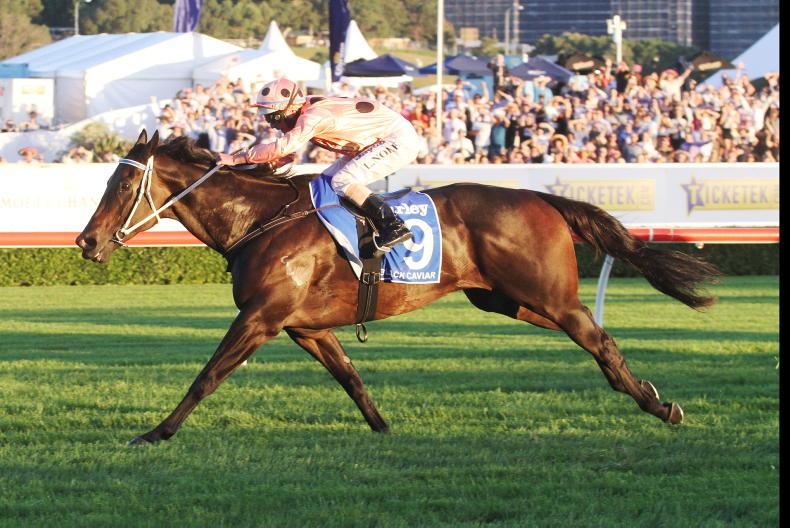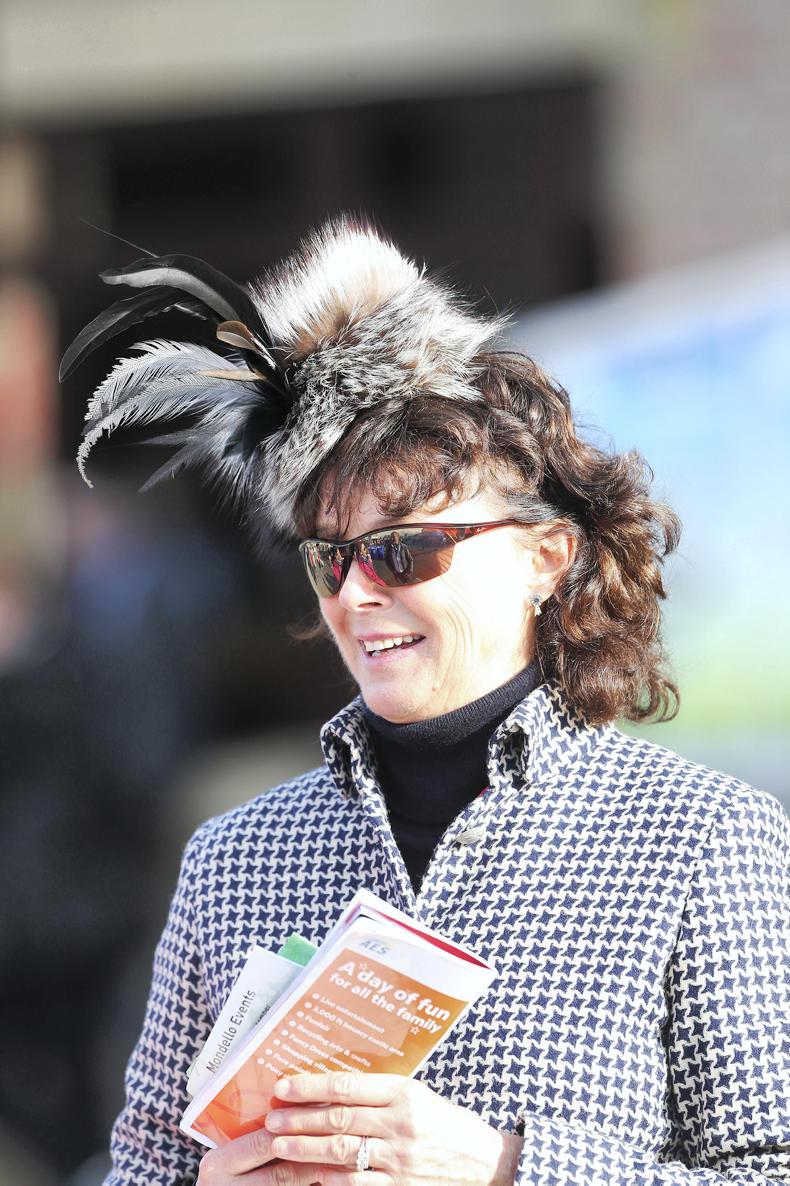2013
THEY came to see the star and went home with tales to tell their grandchildren. Little did anyone know at the time that last Saturday’s Group 1 T.J. Smith Stakes at Randwick was to be Black Caviar’s 25th and final race.

Trainer Peter Moody said at a press conference at his stables on Wednesday: “We thought long and hard about racing on for another season. We thought about Royal Ascot, we thought about Brisbane and we thought about Adelaide, but we believe she has done everything we’ve asked her to do. She couldn’t have possibly done any more.
“It’s the right time to call it a day on what’s been a wonderful career of one of the finest horses we have ever seen. We got three more runs than we thought we were ever going to have. We thought she would be retired post-Ascot. She’s in such great shape and that’s the way we wanted her to bow out.”

Black Caviar’s record-breaking run began in the 1,000 metre Cromwell Handicap for two-years-olds at Flemington on April 18th 2009. Nine starts later, at the 2010 Melbourne Cup Carnival, she won her first Group 1, the Patinack Classic. By last Saturday afternoon she had broken Kingstown Town’s Australian Group 1 record when she claimed her 15th Group 1.
She retires with earnings of A$7,953,936, having been ridden by Luke Nolen in 22 of those wins. For the majority of her career she raced in Melbourne, with the remainder being two starts in Sydney, two in Adelaide, one in Brisbane and, famously, one at Royal Ascot. She started eight times at 1,000 metres, 16 times at 1,200 metres and once at 1,400 metres.
Interestingly, her time over Royal Ascot’s six furlongs was nearly three seconds astern of her slowest 1,200 metres in Australia, providing a different measure on how tough the straight course at Royal Ascot is.
Like all great heads of state wish to do, Black Caviar leaves racing in a better state than when she arrived.
Her contribution, delivered in 23 minutes and 38.51 seconds of race time, created a phenomenon in mainstream media during a truly great sporting tale that captured the attention of an audience far wider than anyone could have imagined. The undefeated all retain a certain mystic that fascinates long after they are gone.
Final act
The Sydney trainers had been keen to talk up their local stars preceding last Saturday’s T.J. Smith Stakes; “I’m trying to plot her downfall,” said Joe Pride.
However, as had been the case with many past plans, Black Caviar undid all the strategy with simply superior ability. From barrier one, seen as awkward by many in the dead to slow conditions, Luke Nolen didn’t overly bustle her out of the gates but did use her strength to ensure she was not trapped on the fence.
Three wide nearing the bend, sitting third, Nolen let the Bel Esprit mare cruise to the leader Rain Affair before asking for her final effort. Urged home over the final 200 metres, Black Caviar posted a three-length margin over the Commands three-year-old colt Epaulette, with the Bel Esprit gelding Bel Sprinter third.
“Twenty-five straight, unbelievable, 15 Group 1s. What more do you say? Horses look fast until they line up against her,” reflected trainer Peter Moody. “I’m really pleased she has put on one hell of a show for the big crowd that has come out to see her.”
[Black Caviar’s 25 wins, during which time she was rated the champion older sprinter in Europe in 2012, and the champion sprinter in Australia three times, included victories in the following Group 1 races: the Diamond Jubilee Stakes, at Royal Ascot, Sportingbet C F Orr Stakes at Caulfield, Coolmore Lightning Stakes at Flemington three times, Distinctive Homes Goodwood Handicap at Morphettville, Lexus Newmarket Handicap at Flemington, Patinack Victoria Racing Club Stakes at Flemington twice, Pulse Pharmacy William Reid Stakes at Moonee Valley twice, Sportingbet Robert Sangster Stakes at Morphettville, Bundaberg Distilling BTC Cup at Doomben, and the Darley T J Smith Stakes at Randwick twice]
Blackstairmountain conquers Japan on final start
2013
KUDOS to the Blackstairmountain team; an audacious plan to ship an eight-year-old gelding 7,000 kilometres around the globe in an attempt to win one of the world’s most valuable jump races was perfectly executed, and full credit is absolutely deserved.

It has been described as Ireland’s greatest racing success in Asia since Stanerra won the Japan Cup in 1983. In fact, in many ways, it is a much greater triumph. The Japan Cup is a JRA invitational race and, as such, all expenses incurred with transport of horses and connections are borne by the JRA; translators, hotel accommodation and taxis are provided free gratis. It is a five star-invitation.
However, the Group 1 Nakayama Grand Jump is not an invitational race, and the Blackstairmountain team had to fund their plan in its entirety. There will have been no change from €100,000.
While Frank Dunne and the Stanerra team were the first Europeans to scale Japan’s racing Everest, Willie Mullins and his team did it without the help of Sherpas, or indeed oxygen tanks.
The foundations for winning Japan’s premier jump race were laid three weeks previously in the Pegasus Jump Stakes which is run over the same course. While the Co. Carlow-based team failed to pocket any of the €250,000 prize money on offer that day, valuable lessons were learned.
Many of the fences are quite intimidating on first inspection, being 1.6 metres tall and 2.4 metres wide, and Blackstairmountain jumped cautiously on his first outing in the land of the Rising Sun. However, though daunting in appearance, they lack substance, and experienced horses jump through them rather than over them.
More efficiently
From the off last Saturday, Blackstairmountain jumped more efficiently. The lessons of three weeks earlier, in addition to some schooling sessions, had been well learnt. Ruby Walsh too, having experienced for the first time the vagaries of Japanese jump racing in the Pegasus, was much more confident, and had his mount placed more prominently throughout.
While 16 horses went to post, the field was soon reduced to 14 and the Irish flag-bearer had no anxious moments during the race. Turning for home, Ruby was in third place, and was leading soon after entering the short Nakayama home straight. However, he had to see off the late strong challenge of Rikiai Kurofune who was only half a length in arrears at the line. Shigeru Juyaku was one and a quarter lengths back in third.
Though Japanese racing fans are not quite as enthusiastic about jump racing as the Irish, there were more than 27,000 in attendance at Nakayama in Tokyo to observe the spectacle. Including the off-course tote, more than €12,000,000 was wagered on the race. However, Blackstairmountain was completely overlooked by the locals, and he was returned at 25/1.
Blackstairmountain’s share of the €1,000,000 prize money amounted to more than €500,000.
In just four minutes and 50 seconds work in Tokyo, the son of Imperial Ballet tripled his previous career racecourse earnings, which included two Grade 1 wins.
It should be noted that Blackstairmountain is not the first Irish-bred winner of Japan’s showcase jump race. Karasi, bred by His Highness the Aga Khan, won this race for three consecutive years from 2005 to 2007, while trained in New Zealand by Eric Musgrove. The race ceased being an invitational event in 2010.




 This is a subscriber-only article
This is a subscriber-only article
 It looks like you're browsing in private mode
It looks like you're browsing in private mode












SHARING OPTIONS: